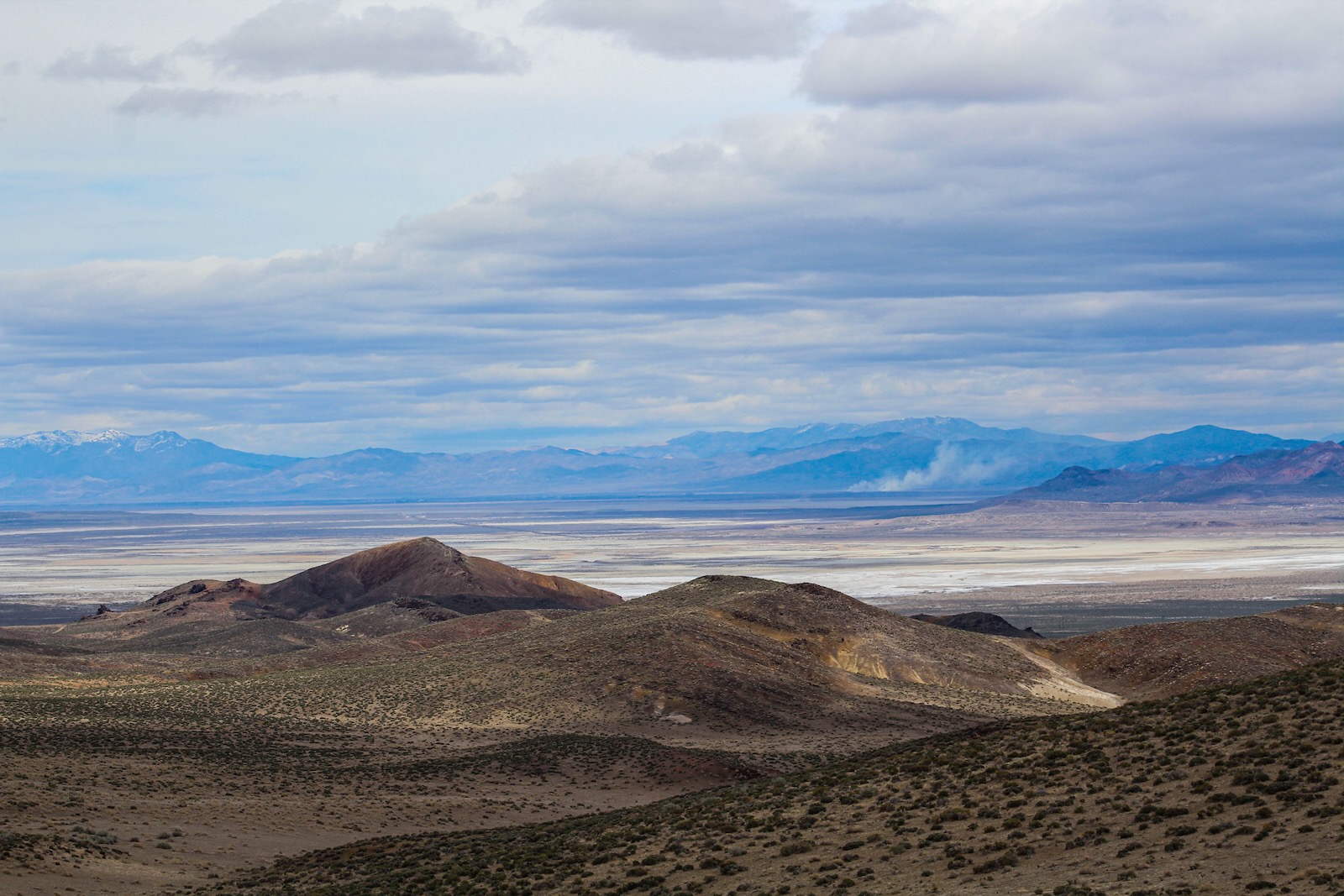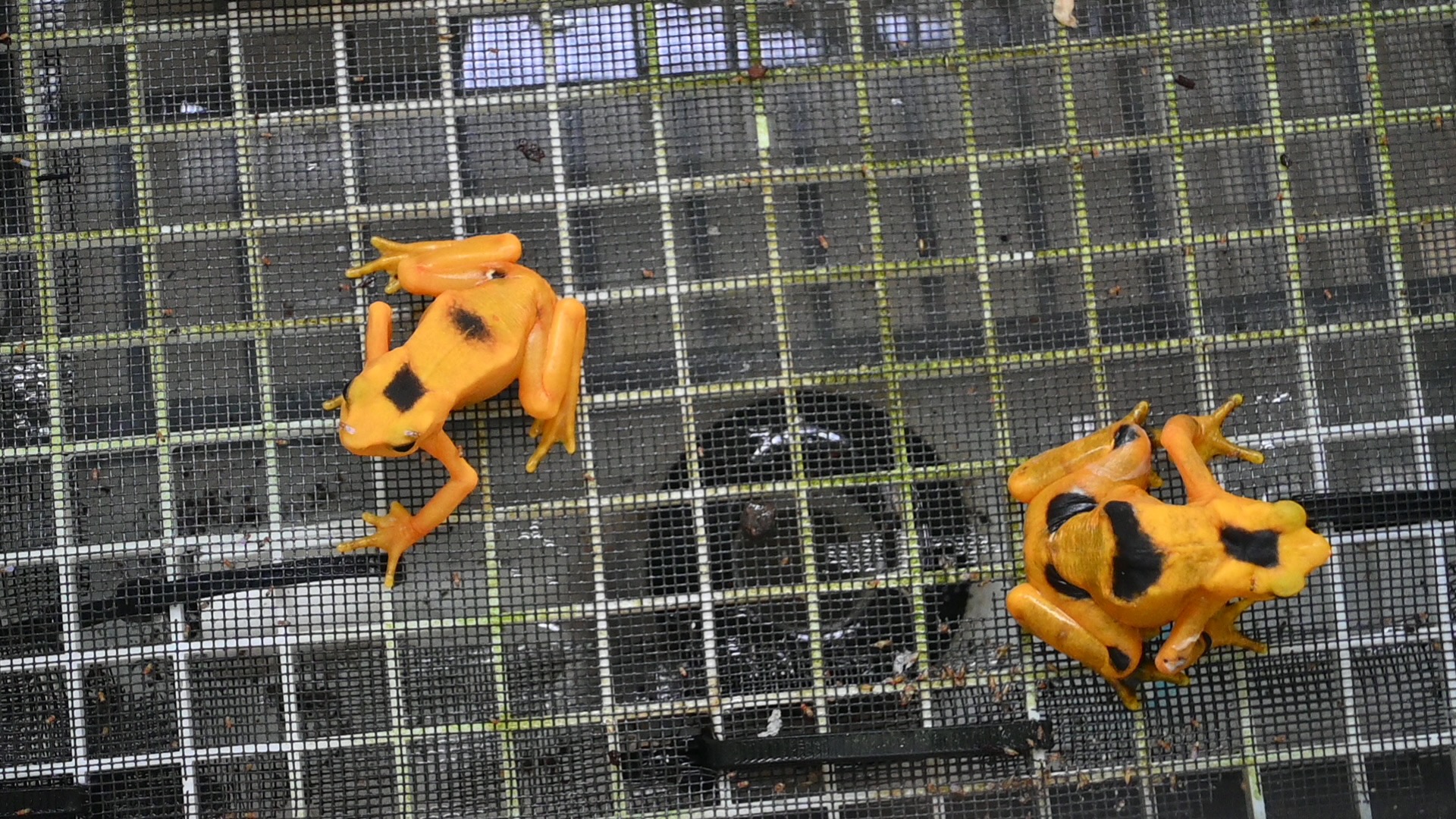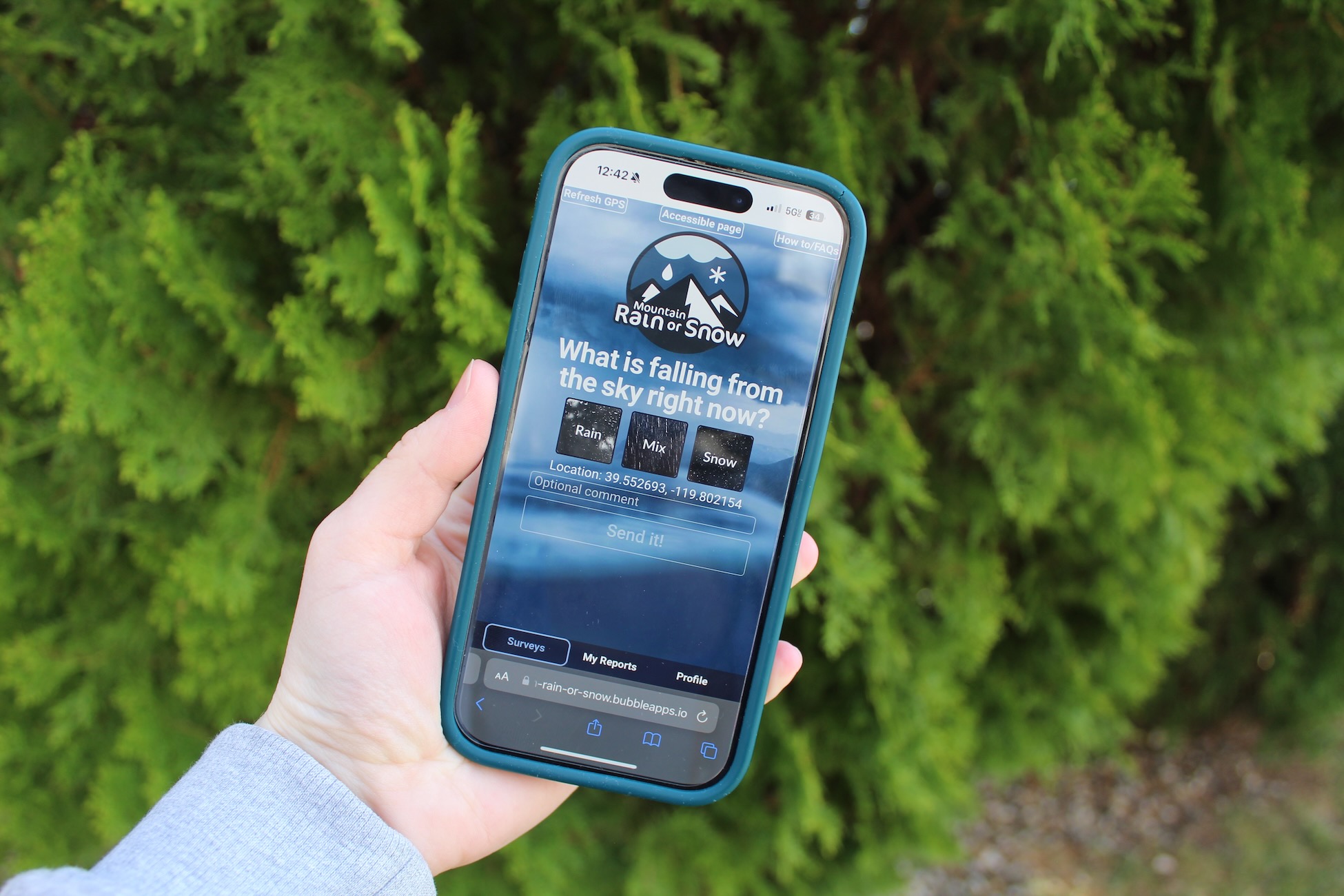A day in the field with UNR geology students and professors provides insight into why the state is the second in geothermal production in the US.
“While on a field trip, you cannot have lunch without a view. This is my favorite part,” said James E. Faulds, director of the Nevada Bureau of Mines and Geology, climbing a small mound of rocks. From the top, we could see mountain ranges that seemed to be painted in different shades of blue far in the distance, and between them, a number of wide, flat basins that, combined, create the geologic treasure that is the state of Nevada. It is called the Basin and Range Province for a reason.
This spot was, in fact, the perfect view to eat our packed lunch. Our group, made up mostly of students and faculty from a Geothermal class at the University of Nevada, Reno, was out on a day-long field trip that aimed to explain why the state has all the key components for geothermal energy production.
The field trip took place in the Hot Springs Mountains, located northeast of Fernley, and consisted of three main stops: Brady’s geothermal field, Desert Peak, and Desert Queen. The Hot Springs range, full of ridges and hills made of volcanic rocks, contains an abundance of geothermal systems that have contributed to Nevada’s current status as the second-largest producer of geothermal energy after California, according to the US Energy Information Administration
The reason for Nevada’s great geothermal potential, although well-understood by geologists, is not common knowledge to many Nevadans. If geothermal energy production were a recipe, Nevada would have all the required geologic ingredients: heat, permeability, and fluids. Additionally, it has good market conditions and incentives that make this industry attractive for business — and we were about to see examples of all of this firsthand.
The day had started early. At 7:30 am, the group of professors and students, all equipped with hiking boots, sunglasses, water bottles, and snacks, left UNR and piled into two vans, headed for the Hot Spring Mountains.
Our first stop, Brady’s geothermal field, an area with all the ingredients for the recipe, is home to the Brady Geothermal Project, where geothermal electricity has been produced since 1992, We walked over unstable, warm ground that crumbled under the weight of our footsteps. Across the valley, we saw fumaroles — places where steam escapes from the hot interior of the Earth– evidence of the first ingredient needed for geothermal energy production, heat.
The heat that we felt comes from within the Earth, and up through the Earth’s crust, which is thinner in Nevada than in most other places. This puts warmer parts of the deeper Earth, like the mantle, closer to the surface.
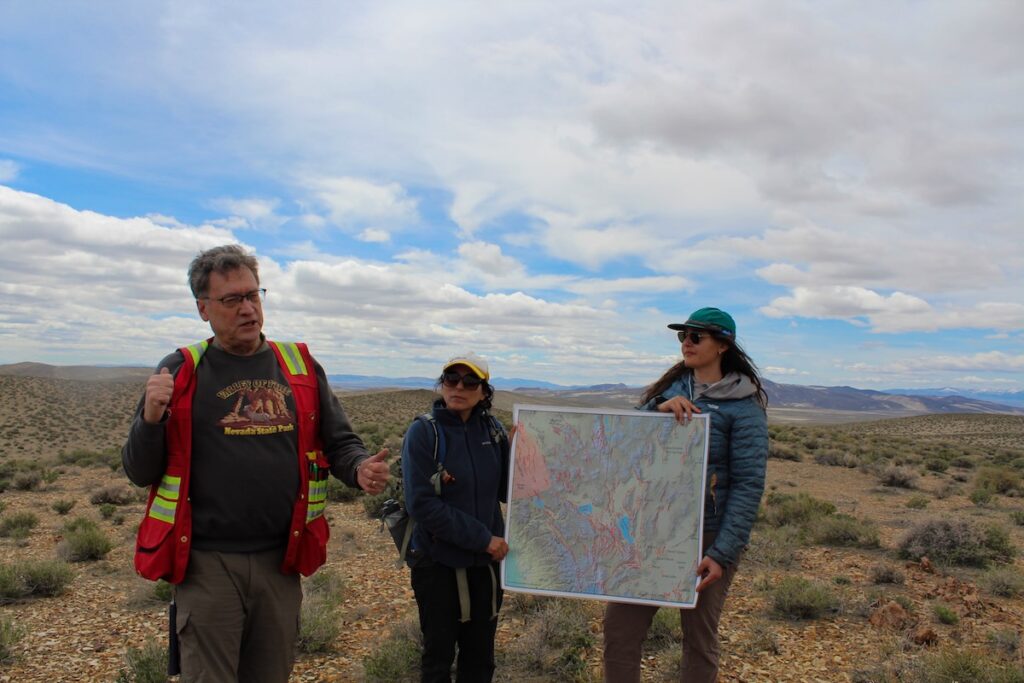

Faulds, who is also a professor at the Mackay School of Earth Sciences and Engineering at UNR, explained this phenomenon leads to what is called a high geothermal gradient, where beneath the surface the temperature is increasing at a higher rate than normal, on the order of about 50 degrees Celsius per kilometer, compared to the average of 25 or 30 degrees Celsius per kilometer.
“That means that you don’t have to go too deep before you have the high temperatures needed for geothermal energy production,” said Faulds.
The wind brought us warm steam with the distinctive strong smell of onions, from an onion dehydration plant owned by Olam International, which uses geothermal energy at lower temperatures than those needed for producing electricity to dry and process vegetables. We also saw, from far away, the operating geothermal power plant that has been at Brady’s geothermal field since 1992.

At the second stop, right before climbing the rocks that hosted our lunch, Faulds explained we were situated at the Desert Peak geothermal field, 5 km from the first stop. This is a hidden geothermal system, meaning it has no surface fumaroles or hot springs.
It was the view of the fault blocks and the collections of rocks that helped us understand the second ingredient of our recipe: permeability.
Permeability refers to the fractures on the crust, and Nevada is well used to them as the state is literally growing. In fact, it is the fastest-growing state in the US, as the crust is pulling apart, extending in the horizontal dimension, and actually adding about an acre to its landscape every year.
“If we think about the distance between Salt Lake City and Reno today, it is 700 kilometers or 450 miles, but if we go back in time 20 million years, it was half that distance,” added Faulds.
On our way to the next spot, we stopped to see another of Nevada’s 26 active geothermal power plants, this one operated by Ormat and located next to a solar power plant. From our spot, the solar plant looked purple as the sunlight hit the panels, but as pretty as it seemed, it needed larger space than what is needed for geothermal wells and plants.
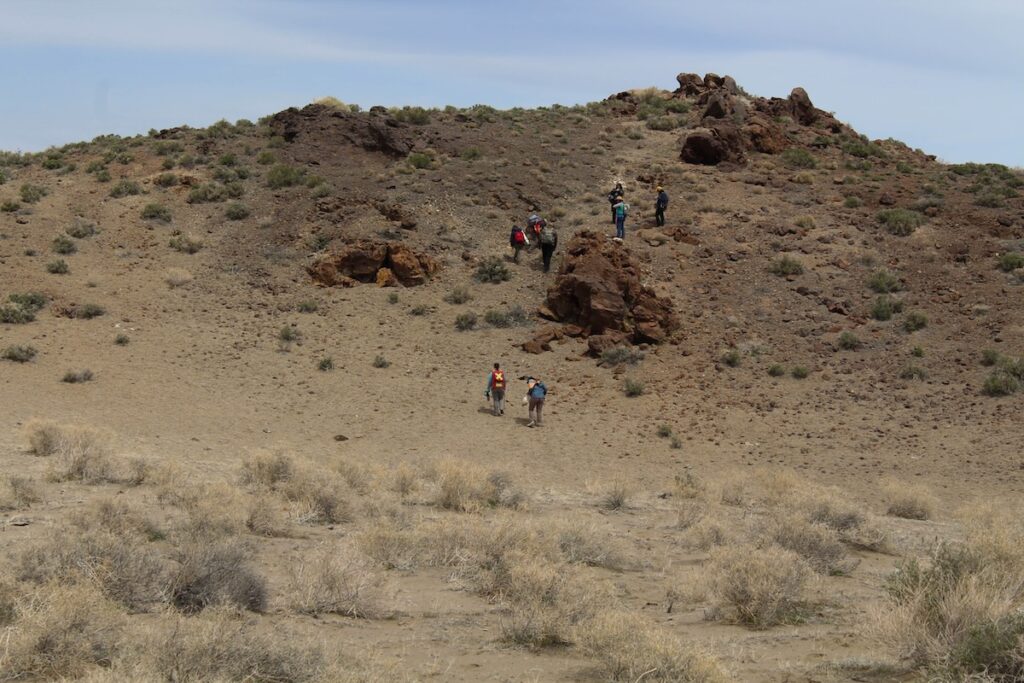
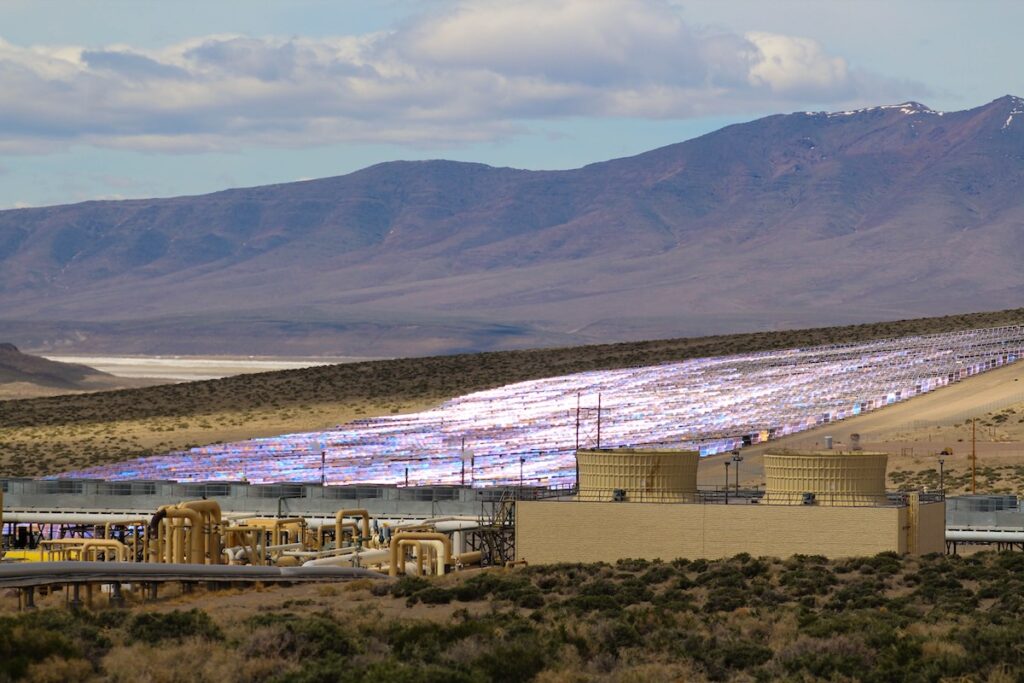
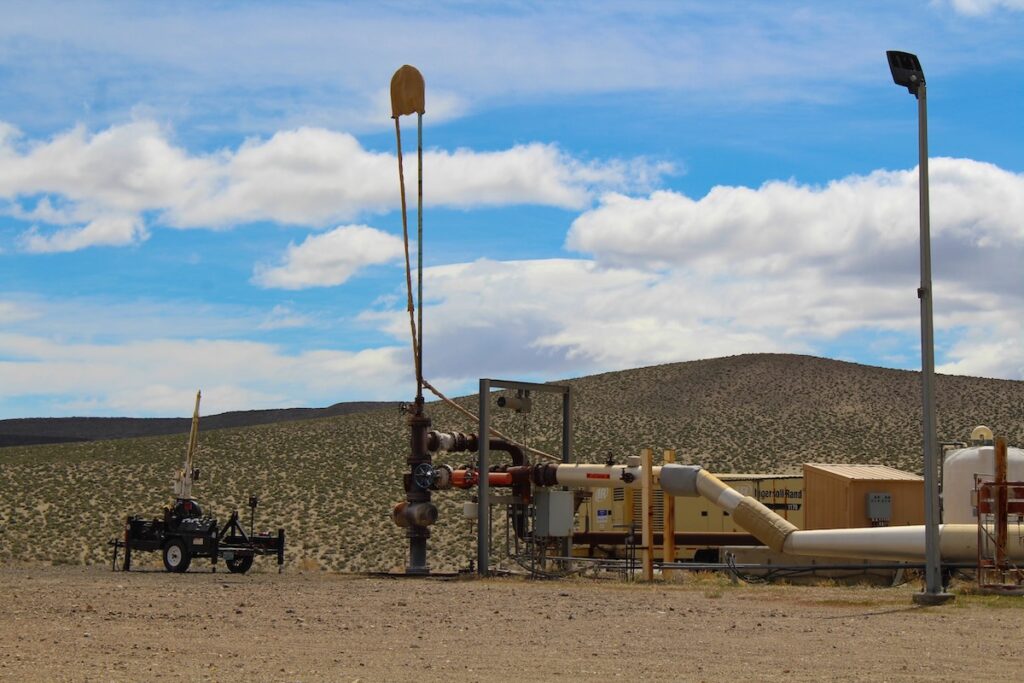
After a brief explanation of how these plants work, we arrived at the third stop, Desert Queen geothermal field, also a hidden system, where we hiked along the fault zone until a well-exposed fault scarp that students analyzed.
The view of the fumaroles and mountain ranges far away was the perfect spot to talk about the third ingredient: fluids Geothermal energy production requires the presence of very hot fluids from underground reservoirs, which moves to the Earth’s surface along fractures and fault lines. In Nevada, as the crust fractures and stretches, warm fluids from underground move to the surface explained Rachel Micander, geologic information specialist at the NBMG.
“It is like moving the whole plate and all of Nevada in a northwesterly direction, and by doing so we are stretching the crust apart, getting all sorts of faults and fractures,” she mentioned. “Each of these mountain ranges that you can see behind me have some of these faults on them. Smaller faults are better as more fluid gets to move around.”
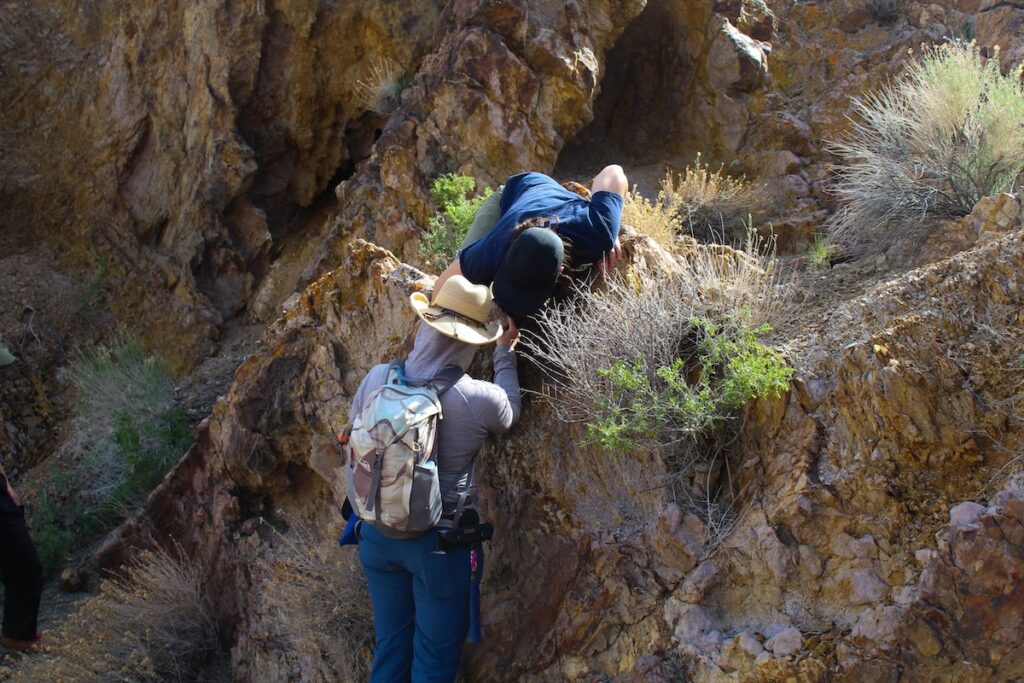
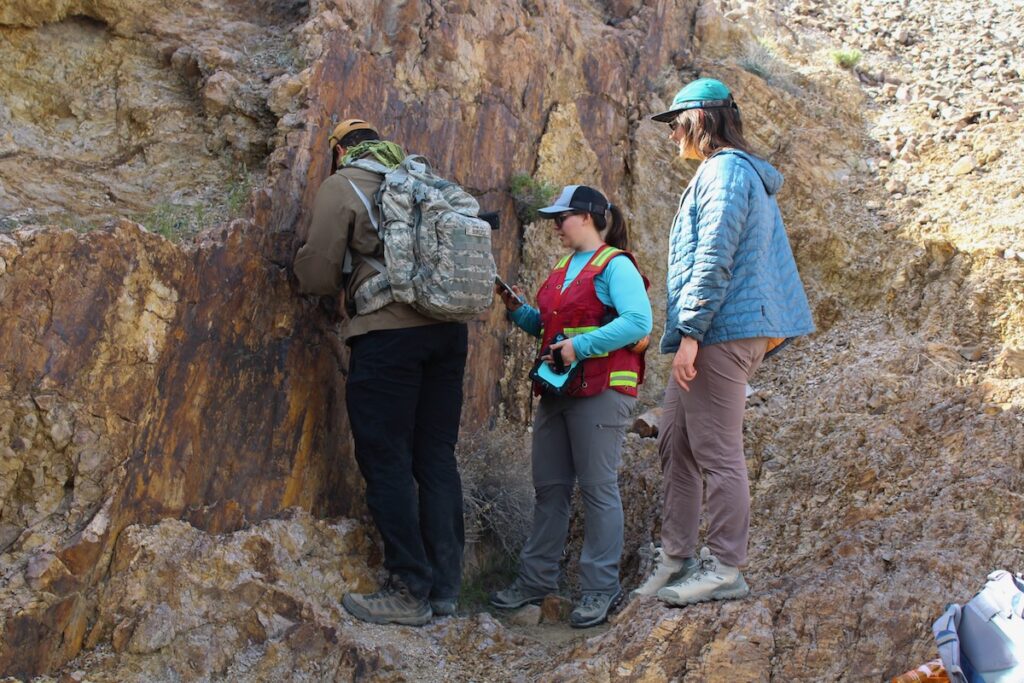
In other words, if you have permeability, you have fluids, because as Nevada’s crust extends and breaks into faults, these allow room for the warm fluids from deep in the Earth to move upward.
When the students finished analyzing the fault scarp, I took a closer look at the fault that, to me, looked like rocks full of scars that resemble those wrinkles that only time causes in old skin. I was right about something: you can see the time, thousands of years, passing through those faults.
We hiked back to the university’s vans and returned to Reno with a new understanding of our surroundings. Nevada is one of the largest geothermal provinces on Earth because the crust has been stretched out over millions of years, making it really thin, with faults allowing hot fluids to rise closer to the surface. This allows for shallower drilling and more efficient and economical energy production. The state, then, has great potential for tapping into this renewable energy source, and geothermal systems for energy production are being actively explored.
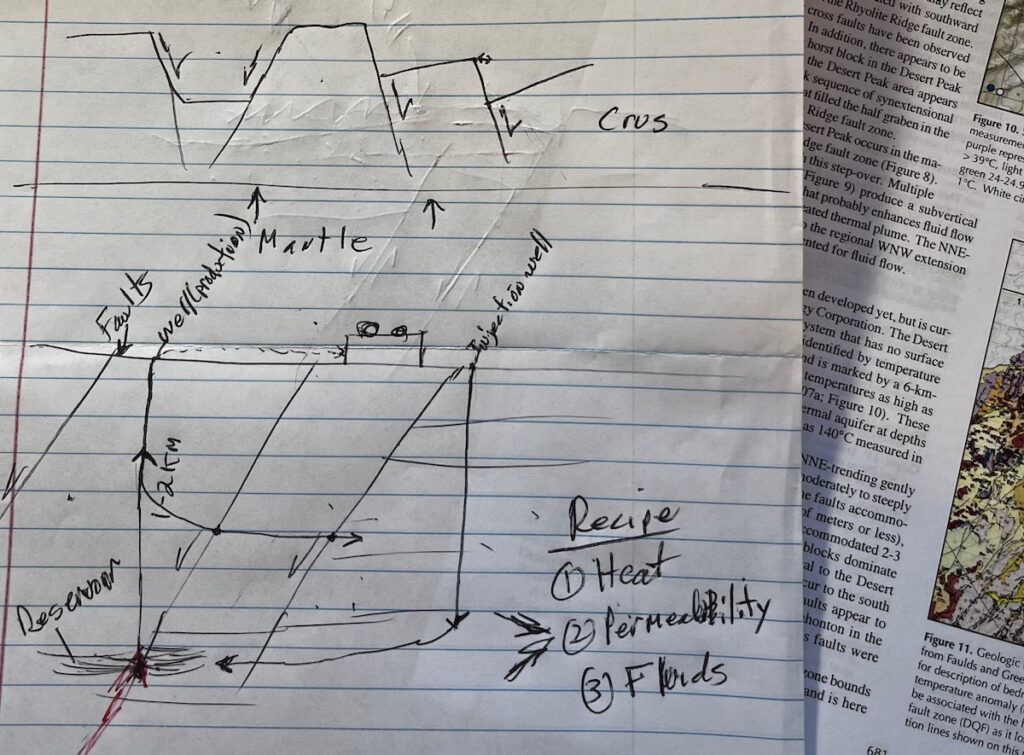

Vanesa de la Cruz Pavas is a graduate student at the Reynolds School of Journalism and a reporter for the Hitchcock Project.

